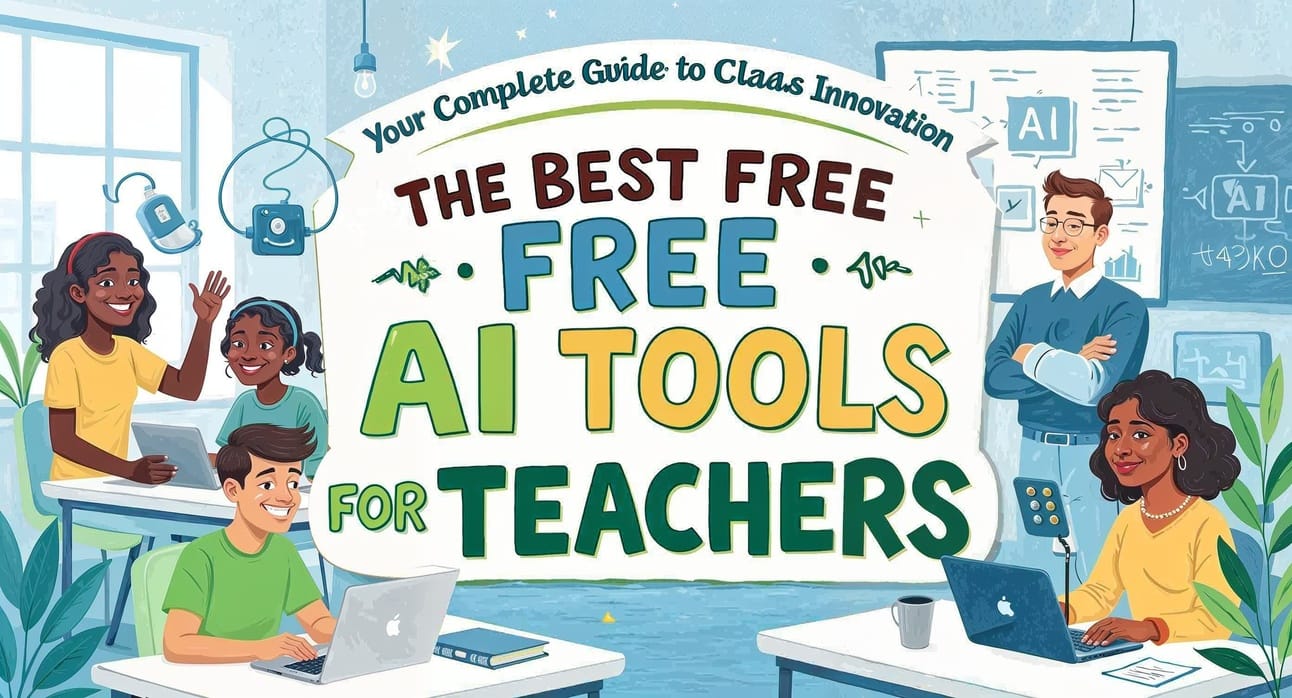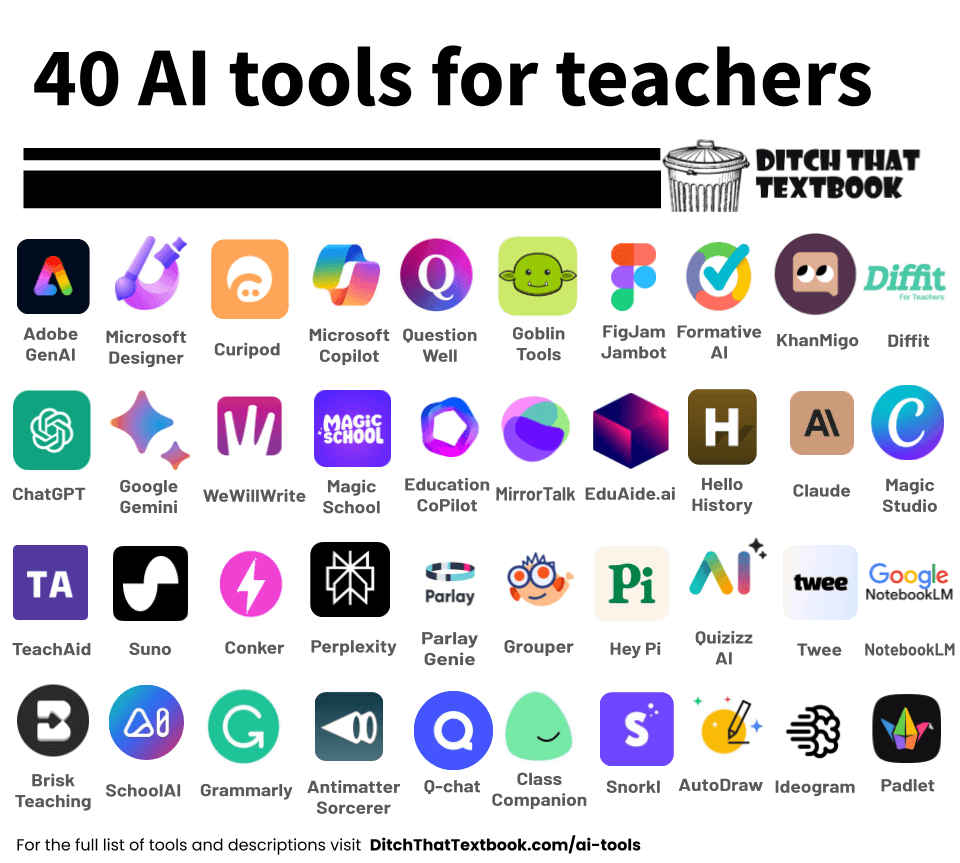
The Best Free AI Tools for Teachers: Your Complete Guide to Classroom Innovation
Let's be honest - teaching is hard enough without drowning in paperwork and admin tasks. You didn't get into education to spend your evenings creating quiz questions or wrestling with lesson plan templates. You got into it to actually teach, to inspire, to make a difference.
The good news? AI tools are here to help you reclaim your time and sanity. But not all AI tools are created equal, and most importantly, many of the best ones are completely free.
I've spent considerable time testing and researching AI tools specifically designed for educators. This isn't about jumping on the latest tech bandwagon - it's about finding practical solutions that actually work in real classrooms with real students. Here's what I've discovered.
Why Teachers Need AI Tools (And Why You Shouldn't Feel Guilty About It)
Before we dive into the tools, let's address the elephant in the room. Some teachers feel guilty about using AI, as if it's somehow "cheating" or diminishing their role. That's rubbish.
Using AI tools for lesson planning, grading, and administrative tasks is like using a calculator for math - it's a tool that frees you up to focus on what really matters: teaching. You wouldn't feel guilty about using a photocopier instead of hand-copying worksheets, would you?
The reality is that teachers are overwhelmed. According to recent studies, educators spend 60% of their time on administrative tasks rather than actual teaching. AI tools can help flip that ratio back where it belongs.
The Top Free AI Tools Every Teacher Should Know
1. MagicSchool AI - The Swiss Army Knife of Education
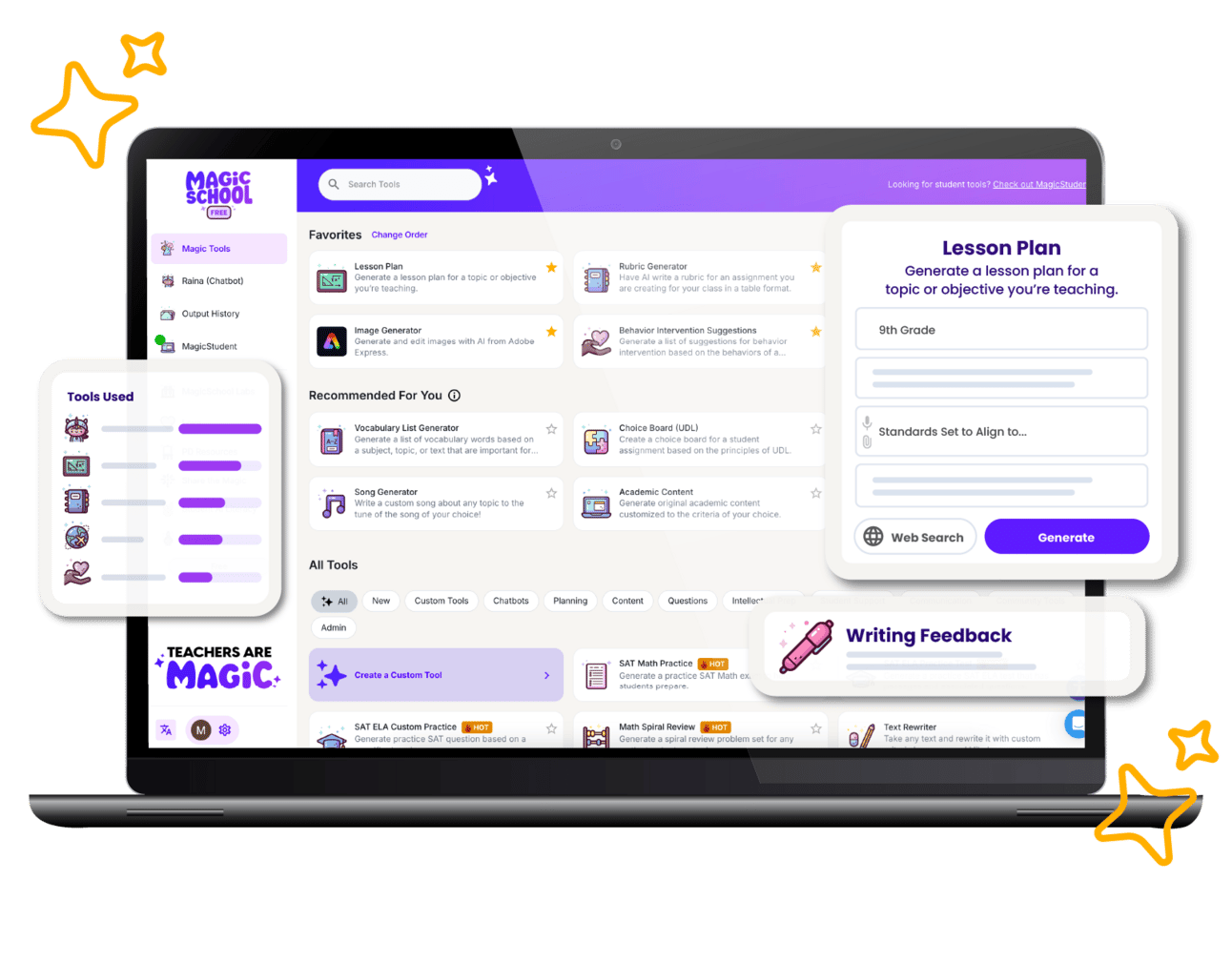
MagicSchool AI is arguably the most comprehensive free AI platform for educators. It's designed specifically for teachers, not adapted from business tools, which makes a huge difference in usability.
What makes it special:
Over 80 specialized tools for educators
Completely free tier with robust features
Designed with classroom privacy in mind
Integration with existing school systems
Best features for teachers:
Lesson Plan Generator: Creates detailed, standards-aligned lesson plans in minutes
Quiz Generator: Automatically generates questions from any text or topic
Differentiation Tools: Adapts content for different learning levels
Assignment Scaffolder: Breaks down complex assignments into manageable steps
Real-world application: I watched a high school English teacher use MagicSchool to create an entire unit on Shakespeare in 30 minutes. The tool generated discussion questions, vocabulary lists, and even suggested multimedia resources. What would have taken her hours of weekend work was done during her lunch break.
The free version includes most features, making it accessible to teachers regardless of their school's budget. The interface is intuitive - you don't need to be tech-savvy to get started.
2. Brisk Teaching - The Chrome Extension That Changes Everything

Brisk Teaching is a Chrome extension that integrates AI directly into the tools you already use - Google Docs, Google Slides, YouTube, and more. It's like having an AI teaching assistant that follows you around the web.
Why it's brilliant:
Works inside existing tools - no new platforms to learn
Contextual AI that understands what you're working on
Free forever for basic features
Seamless integration with Google Workspace
Top features:
Instant Feedback: Provides detailed, personalized feedback on student work
Reading Level Adjustment: Automatically adjusts text complexity for different grade levels
Quiz Creation: Turns any document or video into interactive quizzes
Presentation Enhancement: Suggests improvements and generates speaker notes
The game-changer: Brisk works directly in Google Docs, so when you're reading a student's essay, you can generate feedback with a single click. No copying, pasting, or switching between platforms. It's educational AI done right.
One middle school teacher told me that Brisk cut her grading time in half while actually improving the quality of feedback she provided to students. The AI doesn't replace her judgment - it amplifies it.
3. ChatGPT - The Versatile Conversation Partner
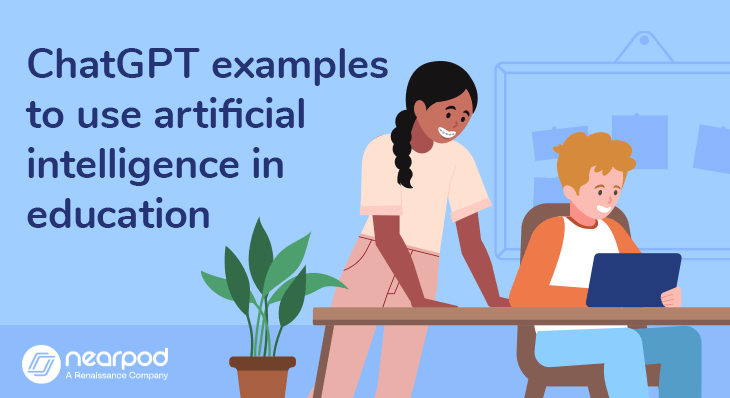
Yes, ChatGPT made the list. While it's not education-specific, its versatility makes it invaluable for teachers who know how to use it effectively.
Why teachers love it:
Completely free tier with substantial capabilities
Excellent for brainstorming and creative tasks
Can adapt to any subject or grade level
Conversational interface that feels natural
Best educational applications:
Curriculum Development: Generate unit overviews and pacing guides
Parent Communication: Draft emails and newsletters
Professional Development: Create training materials and presentations
Student Support: Generate examples and explanations for difficult concepts
Pro tip: The key to using ChatGPT effectively is in the prompting. Instead of asking "Create a lesson plan about fractions," try "Create a 45-minute lesson plan about comparing fractions for 4th graders who struggle with math anxiety, including three hands-on activities and formative assessment strategies."
4. Canva Education - Design Made Simple
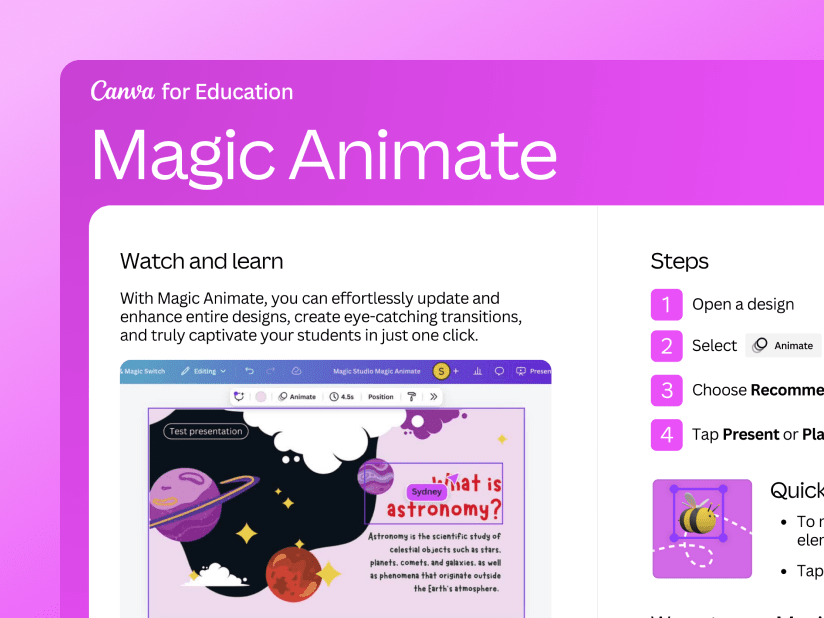
Canva Education is completely free for verified teachers and includes AI-powered design tools that can transform your classroom materials.
What's included:
Magic Design AI for instant layouts
Background remover and image enhancement
Thousands of education-specific templates
Collaboration tools for student projects
Classroom applications:
Visual Lesson Materials: Create infographics, posters, and presentations
Student Projects: Provide templates for student presentations and reports
Classroom Decor: Design bulletin boards and classroom posters
Assessment Tools: Create visually appealing rubrics and handouts
The AI advantage: Canva's Magic Design feature can take your rough ideas and turn them into professional-looking materials in seconds. Upload a photo or type a description, and it generates multiple design options.
5. Grammarly - The Writing Coach
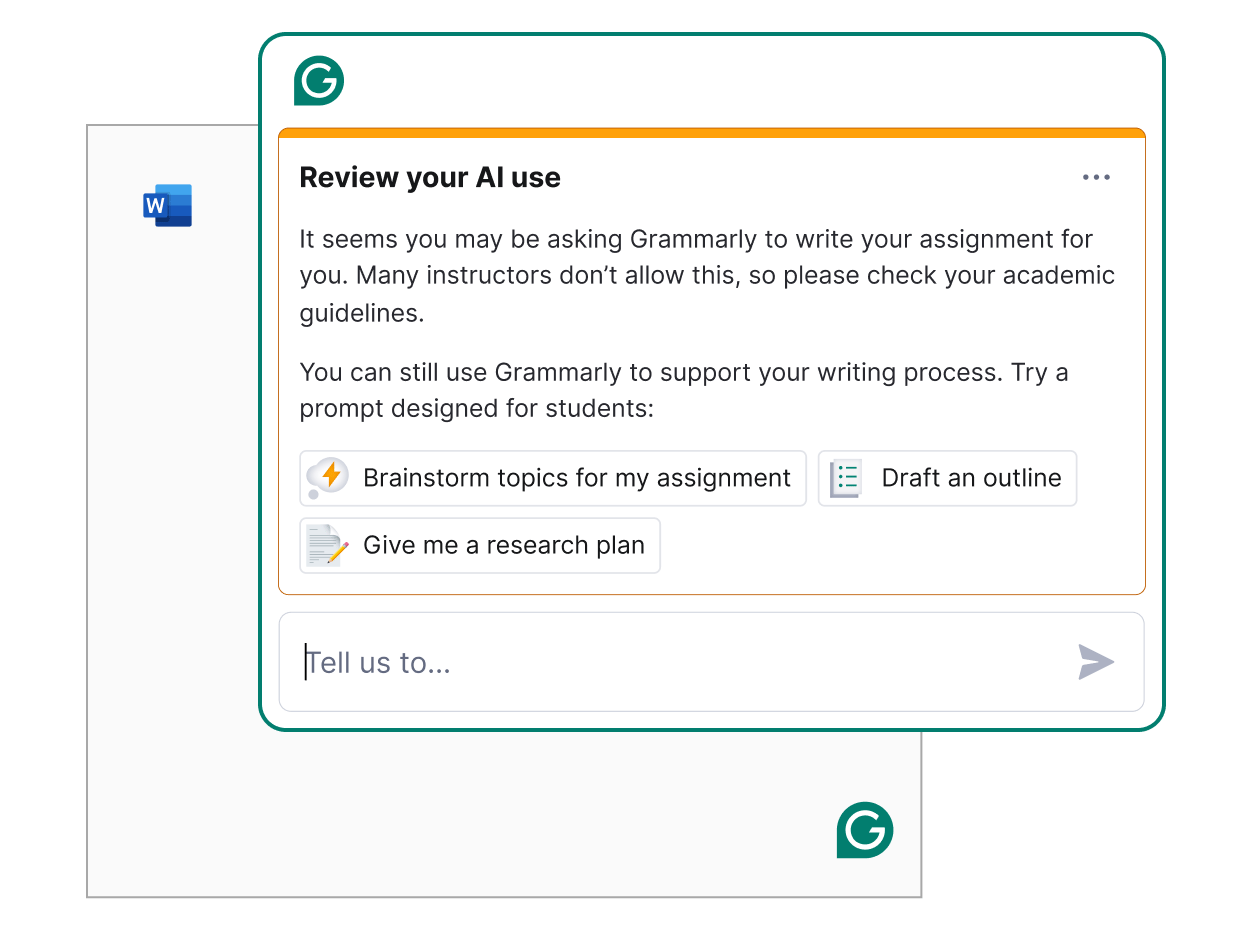
Grammarly's free version is a powerful writing assistant that works everywhere you write online. For teachers, it's particularly valuable for professional communication and modeling good writing practices.
Key features:
Real-time grammar and spell checking
Tone detection and suggestions
Plagiarism detection (in premium version)
Writing clarity improvements
How teachers use it:
Professional Communication: Emails to parents, administrators, and colleagues
Lesson Materials: Ensuring all handouts and presentations are error-free
Student Modeling: Demonstrating editing and revision processes
Grant Writing: Polishing applications for funding and resources
6. Eduaide.ai - The Comprehensive Teaching Assistant
Eduaide.ai offers over 150 AI-powered tools specifically designed for educators. While it has premium features, the free tier provides substantial functionality.
Standout features:
Assessment Builder: Creates rubrics, tests, and evaluation criteria
Lesson Planning: Generates detailed lesson plans with learning objectives
Differentiation Tools: Adapts content for various learning styles and abilities
Communication Helper: Drafts emails, newsletters, and reports
What sets it apart: Eduaide.ai understands educational jargon and standards. When you ask it to create a lesson plan, it includes learning objectives, assessment strategies, and differentiation suggestions without you having to specify.
Subject-Specific AI Tools
For Language Arts Teachers
Twee: Creates reading comprehension exercises from any text
QuillBot: Helps with paraphrasing and summarizing activities
Wordtune: Assists with writing instruction and modeling
For Math Teachers
Wolfram Alpha: Solves complex problems and shows step-by-step solutions
PhotoMath: Provides visual problem-solving demonstrations
Khan Academy's AI Tutor: Offers personalized practice problems
For Science Teachers
Perplexity AI: Excellent for research and current scientific information
Consensus: Searches academic papers for evidence-based content
Claude: Strong at explaining complex scientific concepts
Making AI Work in Your Classroom
Start Small
Don't try to revolutionize your entire teaching practice overnight. Pick one tool and use it for one specific task - maybe lesson planning or creating quizzes. Get comfortable with it before expanding.
Focus on Time-Savers
Prioritize tools that save you the most time on your least favorite tasks. If you hate creating worksheets, start with tools that generate practice problems. If grading drains your soul, focus on feedback tools.
Maintain Your Teaching Voice
AI tools should amplify your teaching style, not replace it. Use them as starting points, then add your personality, experience, and knowledge of your specific students.
Be Transparent
Consider sharing with students how you use AI tools. This models responsible AI use and helps them understand the technology's role in education.
Privacy and Safety Considerations
When using AI tools in education, privacy matters. Here's what to look for:
Student Data Protection: Ensure tools comply with FERPA and local privacy laws
Transparent Policies: Choose tools with clear privacy policies
Data Retention: Understand how long platforms store your information
School Approval: Check with your administration before using new tools
Most of the tools mentioned here have education-specific privacy protections, but it's always worth verifying with your district's IT department.
The Future of AI in Education
We're still in the early days of AI in education. The tools available now are impressive, but they're just the beginning. Future developments will likely include:
Personalized Learning Paths: AI that adapts to individual student needs in real-time
Automated Grading: More sophisticated feedback on open-ended responses
Virtual Teaching Assistants: AI that can handle routine student questions
Predictive Analytics: Early warning systems for students at risk
Common Concerns and How to Address Them
"AI will replace teachers"
Absolutely not. AI tools are designed to handle routine tasks so teachers can focus on what they do best - inspiring, mentoring, and building relationships with students. The human element in education is irreplaceable.
"Students will become dependent on AI"
This is a valid concern, but the solution isn't to avoid AI - it's to teach students how to use it responsibly. Just as we teach students to use calculators appropriately in math, we need to teach them appropriate AI use.
"I don't have time to learn new tools"
Start with one tool that addresses your biggest pain point. Most of these platforms are designed to be intuitive, and the time investment upfront pays dividends in saved time later.
Getting Started: Your Action Plan
Choose one tool from this list based on your biggest challenge
Sign up for the free version and explore the basic features
Start with one specific task - don't try to do everything at once
Give it a week of consistent use before deciding if it's helpful
Share your experience with colleagues - they might have tips or want to try it too
The Bottom Line
AI tools for teachers aren't about replacing human connection or creativity in education. They're about giving you back the time and energy to focus on what matters most - your students.
The teachers who embrace these tools thoughtfully and strategically will find themselves less stressed, more creative, and more effective in their classrooms. They'll have more time for the spontaneous teachable moments, the individual conferences, and the relationship-building that makes education truly transformative.
You don't need to be a tech expert to benefit from AI in education. You just need to be willing to try something new and see how it can make your teaching life better.
The future of education isn't about choosing between human teachers and AI - it's about teachers empowered by AI to do what they do best, better than ever before.
Start with one tool. See what happens. Your students - and your sanity - will thank you.
Looking for more educational technology resources? These tools are just the beginning. The key is finding what works for your specific situation and building from there. Remember, the best tool is the one you'll actually use consistently.

